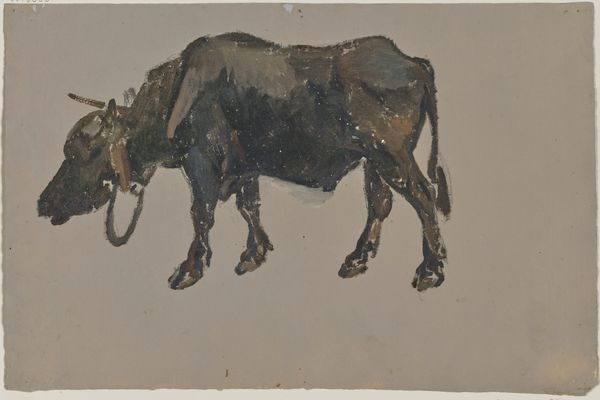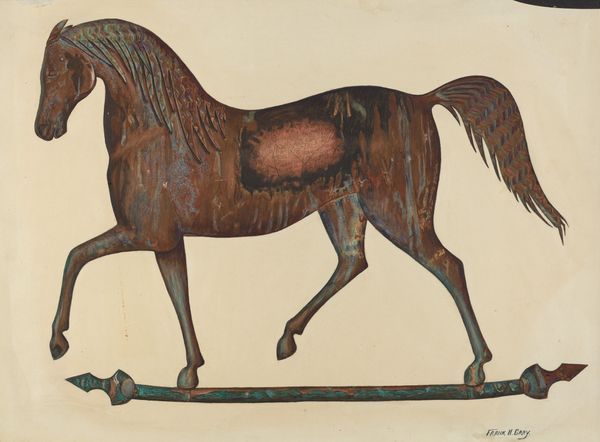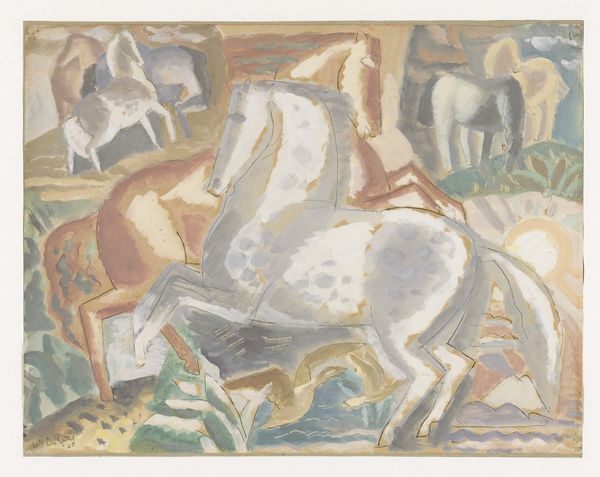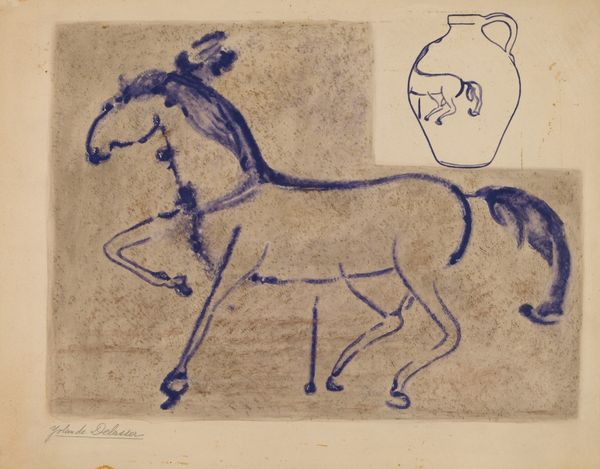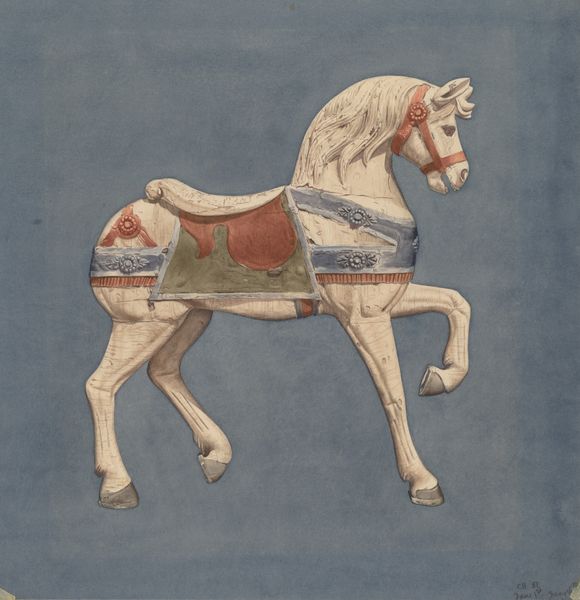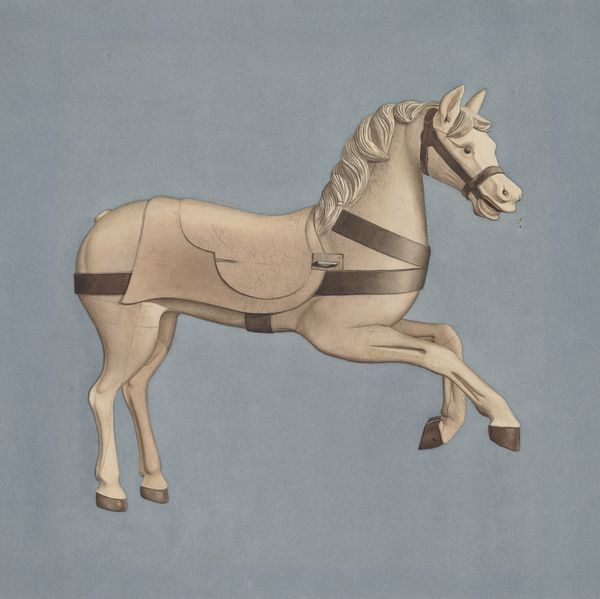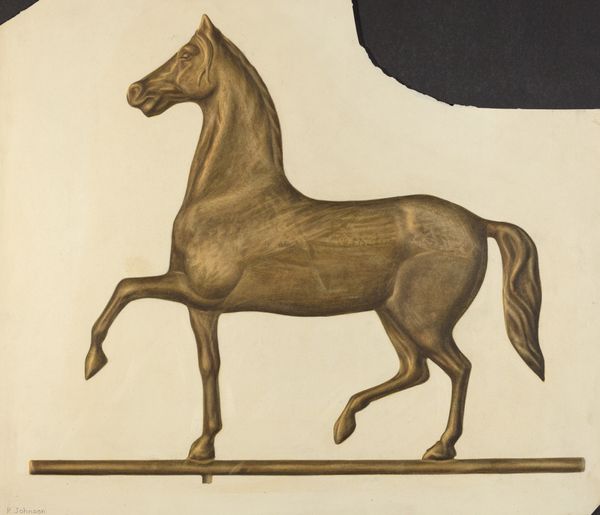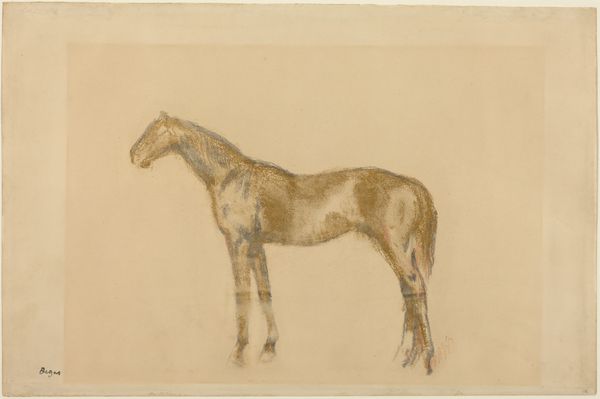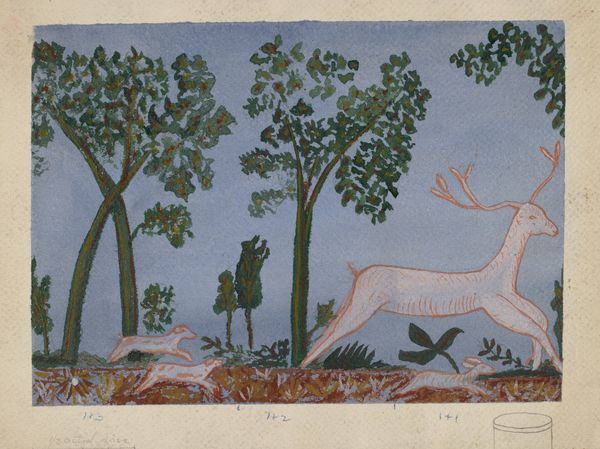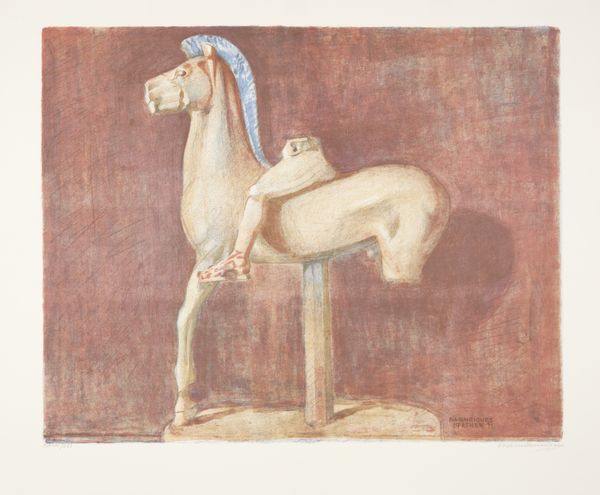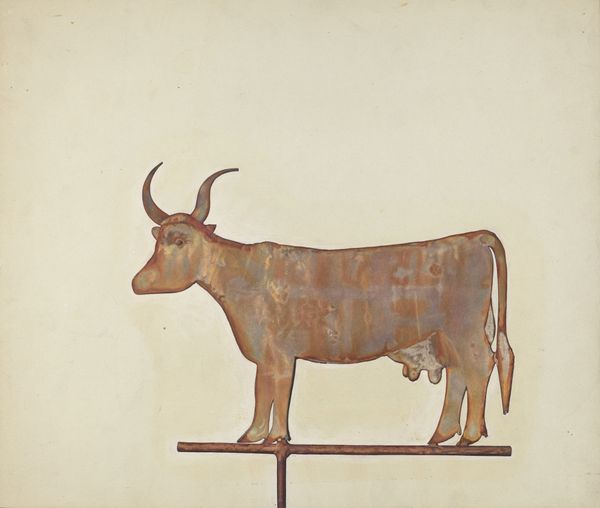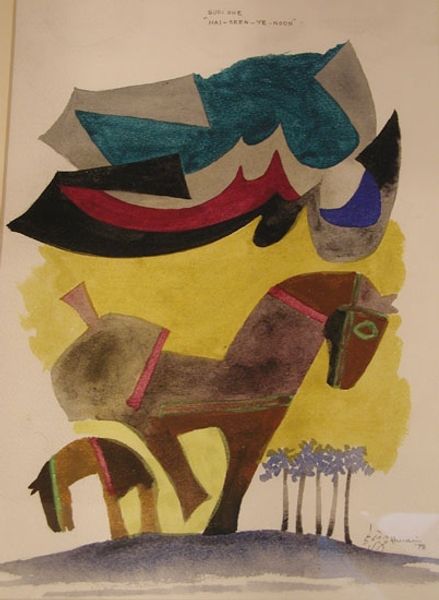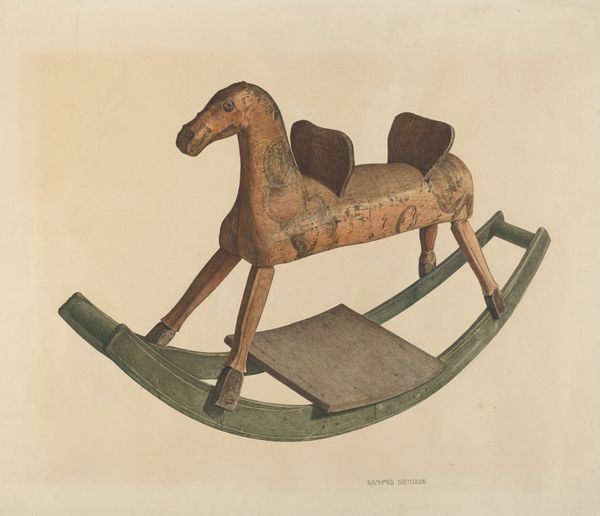
painting, watercolor
#
water colours
#
painting
#
landscape
#
ancient-egyptian-art
#
figuration
#
watercolor
#
ancient-mediterranean
#
watercolor
Dimensions: facsimile: h. 30 cm (11 13/16 in); w. 31 cm (12 3/16 in) scale 1:1 framed: h.
Copyright: Public Domain
Editor: We're looking at *Ibex, Tomb of Amenhotep*, created around 1473 BC and now housed at the Metropolitan Museum of Art. It's a watercolor painting. I'm immediately struck by how fragile it seems, with visible damage across the surface. What’s your take on this piece, considering its age and context? Curator: The fragility is key, isn’t it? It forces us to confront issues of preservation, power, and access to history. Consider how ancient Egyptian art, initially created within a highly structured social hierarchy, becomes recontextualized in a modern museum. Whose story are we actually seeing, and whose labor made that story visible? Editor: That's a powerful question. So, the painting itself is a depiction of an Ibex in what appears to be a landscape, yet the focus on the animal also raises a lot of questions, I wonder... Curator: Yes, but is it truly "landscape" as we understand it? Or is this Ibex more symbolic? How did animals function within Egyptian culture – as representations of deities, symbols of power, or simply as components of the natural world under human dominion? Look closely at the style—its flatness, its limited color palette. Does this echo other depictions of power from that era? Editor: I see what you mean, the deliberate artistic choices amplify its message beyond a mere animal portrait. I think so. Does the placement of this image within Amenhotep’s tomb reveal insights into the pharaoh's beliefs or self-image? Curator: Absolutely. Tombs were never just resting places. They were statements – declarations of status, wealth, and beliefs about the afterlife. How might the presence of the Ibex contribute to that declaration? What kind of afterlife is being imagined here? Consider the social context; how does our interpretation shift if we look at ancient Egyptian art with today's understanding of inclusivity? Editor: It sounds like this image invites many entry points, and perhaps raises more questions than answers! Thanks, that gives me so much to think about. Curator: Precisely, and that’s its ongoing power! Considering these elements creates space for dialogue, a place to question dominant narratives, and connect the art to the urgent conversations of our time.
Comments
No comments
Be the first to comment and join the conversation on the ultimate creative platform.
